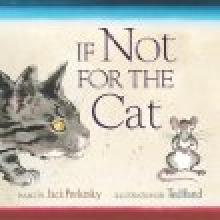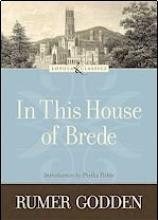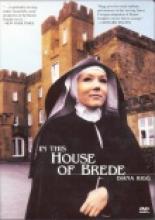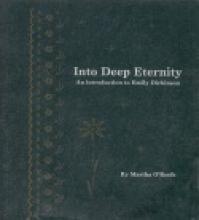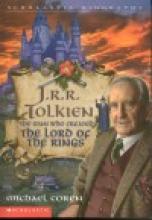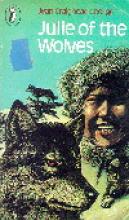Literature
If Not for the Cat
Subject(s):
Grade / Age level:
Review:
This is what a picture book should be. A perfect pairing of beautiful text and beautiful illustrations.
I love haiku and Jack Prelutsky's verses are beautiful examples of the form. I love poems that linger, that take up residence in your heart and resonate long after the book is closed. The title poem has made a nest in my ear and sings to me while I'm doing the dishes:
If not for the cat, And the scarcity of cheese, I could be content.It has something of the simplicity and weight that I find so pleasing in William Carlos Williams. And several others are beginning to work their way in as well. Like this one about the kangaroo:
Safe inside my pouch Sleeps the future of my kind-- Delicate and frail.Nor am I the only one. After only two or three readings my three-year old remembers and recites quite a few lines herself. I have found her picking up the book on her own, flipping through the pages, and reciting what she remembers. Each poem is in the voice of a different animal and Prelutsky's genius is in the personality of the different voices, hard to convey in a so short a form as haiku. I love the way he captures the slow sloth, the hive mind of the ants, (humorously followed immediately by the ant eater), and the threatening presence of the snake and the skunk. Especially memorable are the rounded polysyllables of the jellyfish:
Boneless, translucent, We undulate, undulate, Gelatinously.Ted Rand's paintings are a lovely match, each one has a very different tone, well suited to the paired poem. My favorite is definitely the dark, moody one of the moth drawing close to a candle. Though the bright hummingbird hovering near festive orange nasturtiums is also right up there.
Reviewed by:
First reviewed:
6-5-2009
In Search of Shakespeare
Subject(s):
Grade / Age level:
Resource Type:
Review:
This is a fascinating documentary, but not suitable for children. Although it leans secular to a certain extent, it provides a very helpful (and detailed) background of the nature of the political and religious conflicts going on in Shakespeare’s world. It also makes a pretty strong case that Shakespeare grew up in a Catholic household and had some Catholic sympathies throughout his life, that at least seem to reflect the basic morals found in his plays. There is plenty of ugliness too, but I think it’s worth sorting through the muck to get a better understanding of the Bard.
Available from Netflix or your local library.
Because of mature content and a slight secular bias, this series is recommended for parents (who can, of course, share the content with their children at their own discretion).
Reviewed by:
First reviewed:
2-11-2009
In This House of Brede
Subject(s):
Grade / Age level:
Review:
Reviewed by:
First reviewed:
8-21-06
In This House of Brede
Subject(s):
Grade / Age level:
Resource Type:
Review:
This film, originally made for British television, is based on the novel In This House of Brede by Rumer Godden. It is an admirable portrayal of a woman entering a cloistered Benedictine Abbey relatively late in life and how she learns to love all - the lovable and the "unlovable" for the sake of Christ. While the glimpses of the outside world (of the 1970s) are somewhat dated in appearance - clothing, hairstyles, etc. - this actually enhances the concept of the timelessness of the religious life and of the Church (this is further highlighted by the beautiful Gregorian chant music heard throughout the film). The story is beautiful, but a little complex, and will probably be best appreciated by teens and adults.
Additional notes:
95 min., Color, Starring Diana Rigg
Reviewed by:
First reviewed:
6-23-03
Into Deep Eternity
An introduction to Emily Dickinson
Subject(s):
Grade / Age level:
Resource Type:
Review:
Perspective:
Catholic
Reviewed by:
First reviewed:
7-1-03
J.R.R. Tolkien
The Man Who Created the Lord of the Rings
Subject(s):
Setting:
Grade / Age level:
Review:
This is a surprisingly good, very readable biography of one of the most popular authors of all time. J.R.R. Tolkien was born in South Africa, the son of an English banker. After her return to England and the death of her husband, Tolkien's mother, Mabel, converted to Catholicism. Shunned by relatives after this, she was assisted by a kind parish priest who took care of her two sons after she died at age 34.
Michael Coren skillfully recounts Tolkien's life - growing up as an orphan, his lasting interest in language and learning and his battle experience in World War I. All the way through he includes interesting and enlightening details - especially ones that we will recognize as relevant to Tolkien's stories. Despite the secular publisher, Tolkien's faith is discussed in some detail (and quite fairly) with Joseph Pearce's book, Tolkien: Man and Myth, (Ignatius Press) featured as a prominent source. Coren does include brief summaries of the Hobbit and the Lord of the Rings which include some real plot-spoilers for those who haven't yet read them (they also aren't the most accurate book summaries I've ever read). I would suggest reading this biography after already having read The Hobbit and the Lord of the Rings. Although intended for youth reading, the story is delightful and interesting for adults (as well as a nice quick read).
Michael Coren skillfully recounts Tolkien's life - growing up as an orphan, his lasting interest in language and learning and his battle experience in World War I. All the way through he includes interesting and enlightening details - especially ones that we will recognize as relevant to Tolkien's stories. Despite the secular publisher, Tolkien's faith is discussed in some detail (and quite fairly) with Joseph Pearce's book, Tolkien: Man and Myth, (Ignatius Press) featured as a prominent source. Coren does include brief summaries of the Hobbit and the Lord of the Rings which include some real plot-spoilers for those who haven't yet read them (they also aren't the most accurate book summaries I've ever read). I would suggest reading this biography after already having read The Hobbit and the Lord of the Rings. Although intended for youth reading, the story is delightful and interesting for adults (as well as a nice quick read).
Reviewed by:
First reviewed:
2-27-2002
Julie of the Wolves
Subject(s):
Grade / Age level:
Review:
Her Eskimo name is Miyax, her American name is Julie. She is journeying through the desolate North Slope of Alaska, from Barrow to Point Hope, and starving. There are no lemmings, which means there are no weasels, no white foxes, no snowy owls - in fact, no food that Miyax can catch with only a knife. Her only hope for survival, she feels, is to befriend the wolves, to become a member of their pack, and this she sets out to do.
The book is divided into three parts - the first part, Amaroq the Wolf, tells in intense anthropological detail how 13 year old Miyax strives to study and become accepted by the wolf pack so she can have a share of their kills. The tone is completely unsentimental but infused with the fervent admiration and affection Miyax feels for these fellow travelers.
The second part is a flashback recounting how Miyax was raised by her father in an Eskimo seal camp until the age of nine, when she had to live with her aunt in order to go to school. In order to escape from this life, she was willing to cooperate in the traditional child-marriage her father had arranged between her and a son of a friend in Barrow. Violence on the part of the young husband drives her into the wild; her goal is to reach a port town and sail to meet her pen pal Amy, who lives in San Francisco.
The third part tells of how her dreams of American civilization, symbolized by her friend Amy's pink room, are shattered by a new act of violence; this time against the wolf she has come to think of as a father. Is American civilization really so civilized after all? The final decision she has to make does not fall along simple black-and-white lines, just as the real-life balance between traditional and modern civilization is not an easy one for today's Eskimos to come to terms with.
This book is a difficult one to review in some ways. Miyax's character is beautifully drawn, and the wolves and the stunning Alaskan environment qualify as characters in their own right in this book. Miyax is so distinctively Eskimo, composing songs to the wolves and skinning caribou with her ulu, and yet so universally a young girl. I can picture some children loving this book and others being put off just because it is so unique.
The book is divided into three parts - the first part, Amaroq the Wolf, tells in intense anthropological detail how 13 year old Miyax strives to study and become accepted by the wolf pack so she can have a share of their kills. The tone is completely unsentimental but infused with the fervent admiration and affection Miyax feels for these fellow travelers.
The second part is a flashback recounting how Miyax was raised by her father in an Eskimo seal camp until the age of nine, when she had to live with her aunt in order to go to school. In order to escape from this life, she was willing to cooperate in the traditional child-marriage her father had arranged between her and a son of a friend in Barrow. Violence on the part of the young husband drives her into the wild; her goal is to reach a port town and sail to meet her pen pal Amy, who lives in San Francisco.
The third part tells of how her dreams of American civilization, symbolized by her friend Amy's pink room, are shattered by a new act of violence; this time against the wolf she has come to think of as a father. Is American civilization really so civilized after all? The final decision she has to make does not fall along simple black-and-white lines, just as the real-life balance between traditional and modern civilization is not an easy one for today's Eskimos to come to terms with.
This book is a difficult one to review in some ways. Miyax's character is beautifully drawn, and the wolves and the stunning Alaskan environment qualify as characters in their own right in this book. Miyax is so distinctively Eskimo, composing songs to the wolves and skinning caribou with her ulu, and yet so universally a young girl. I can picture some children loving this book and others being put off just because it is so unique.
There is nothing wrong with the morality presented in the story that I could find. Miyax strives to maintain her integrity throughout the book in the face of many difficulties. Yet the scene when her young, mentally disabled husband tries to force himself on her might be too much for young readers. It has a pivotal part in the story; it is not dwelt on inappropriately. I think I would give this to an older reader, perhaps a high schooler; with a younger child, you might want to pre-read the troubling section and perhaps discuss it beforehand.
Additional notes:
This book has been recommended by some for our red flag list because of the troubling section mentioned in the review.
Reviewed by:
First reviewed:
3-25-02
Just David
Number of pages:
240 pages
Copyright:
1916
Publisher:
Whole Heart Ministries
Binding:
Sewn Hardcover
Subject(s):
Grade / Age level:
Review:
Young David has grown up in an isolated cabin with his father (since his mother's death when he was only four) in a beautiful mountain setting. There, his father has given him an excellent but unusual education - he is fluent in several languages, knows a great deal about science and nature and plays the violin beautifully. His father has sheltered him from all evil and taught him only what is good and beautiful.
One day he and his father pack their belongings and head back toward civilization. The father, deathly ill, dies on the journey and David finds himself in the care of a well-meaning elderly farm couple. They and most of their neighbors have a very difficult time understanding the golden-hearted David, who makes friends with the lonely and forgotten of the town and soothes many hardened hearts with his beautiful music. David becomes wrapped up in a fairy tale and a mystery which figure heavily in the plot.
Parents may see this story as an embodiment of some of the most fundamental ideas of the homeschool movement. Some will no doubt find it a little sappy. It might make an interesting contrast to the book North to Freedom by Anne Holm, whose character, also called David and of approximately the same age, makes a transition from the evils of a prison camp into a much more beautiful world.
One day he and his father pack their belongings and head back toward civilization. The father, deathly ill, dies on the journey and David finds himself in the care of a well-meaning elderly farm couple. They and most of their neighbors have a very difficult time understanding the golden-hearted David, who makes friends with the lonely and forgotten of the town and soothes many hardened hearts with his beautiful music. David becomes wrapped up in a fairy tale and a mystery which figure heavily in the plot.
Parents may see this story as an embodiment of some of the most fundamental ideas of the homeschool movement. Some will no doubt find it a little sappy. It might make an interesting contrast to the book North to Freedom by Anne Holm, whose character, also called David and of approximately the same age, makes a transition from the evils of a prison camp into a much more beautiful world.
Reviewed by:
First reviewed:
3-25-02
Just Jennifer
Number of pages:
187 pages
Copyright:
1945
Publisher:
Image Cascade
Binding:
Softcover
Subject(s):
Grade / Age level:
Review:
Welcome to the Jordon household of "Army Brats!" Jennifer is a spunky young girl of 16 years left in charge of eight military drilled younger brothers and sisters, while their father, General Jordon, is overseas on duty.
Jennifer and Peter 's mother died when Jennifer was only five. Their father remarried a delightful and kind new mother, who loved them very much. With her came Gwen and Alice, who Jennifer said could only be "half army" (since they weren't born on an Army Post). Then came the twins, Neal and Susan, and Bitsy, who were all declared "definitely army" by Jennifer. Sadly, this mother also died leaving Jennifer in charge.
Right before Gen. Jordon had to leave on overseas duty, a telegram arrived notifying them that Gen. Jordon's brother and wife had died and their son, Donny, had to go live with the Jordons! So, Donny slipped in quietly between Alice and the twins, and since he was a quiet boy, it seemed as if he had been there forever.
Read, also, in this great book how the Jordons moved (under the guidance of a 16 yr. old!) to a nearby lake, adopted a dog, got a horse, encouraged a romance, and befriended a lonely English boy. This was a very good book that I enjoyed immensely.
Jennifer and Peter 's mother died when Jennifer was only five. Their father remarried a delightful and kind new mother, who loved them very much. With her came Gwen and Alice, who Jennifer said could only be "half army" (since they weren't born on an Army Post). Then came the twins, Neal and Susan, and Bitsy, who were all declared "definitely army" by Jennifer. Sadly, this mother also died leaving Jennifer in charge.
Right before Gen. Jordon had to leave on overseas duty, a telegram arrived notifying them that Gen. Jordon's brother and wife had died and their son, Donny, had to go live with the Jordons! So, Donny slipped in quietly between Alice and the twins, and since he was a quiet boy, it seemed as if he had been there forever.
Read, also, in this great book how the Jordons moved (under the guidance of a 16 yr. old!) to a nearby lake, adopted a dog, got a horse, encouraged a romance, and befriended a lonely English boy. This was a very good book that I enjoyed immensely.
Additional notes:
Reviewer 8th grade homeschooler
Reviewed by:
First reviewed:
1998-99

